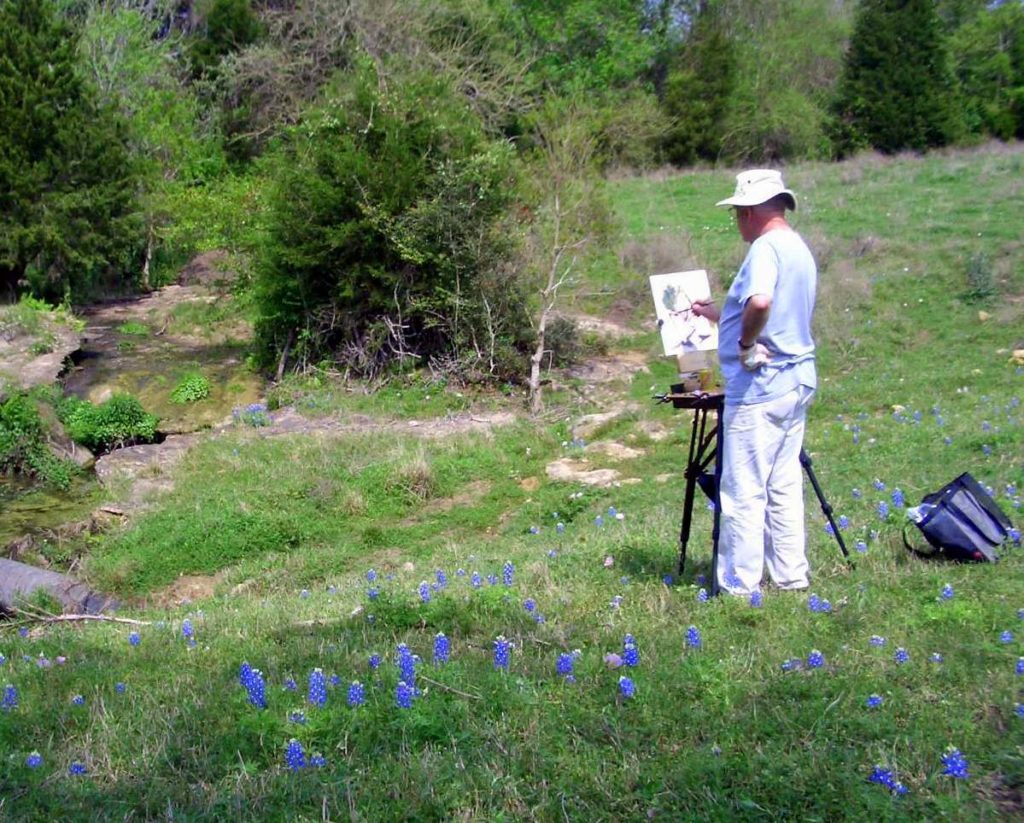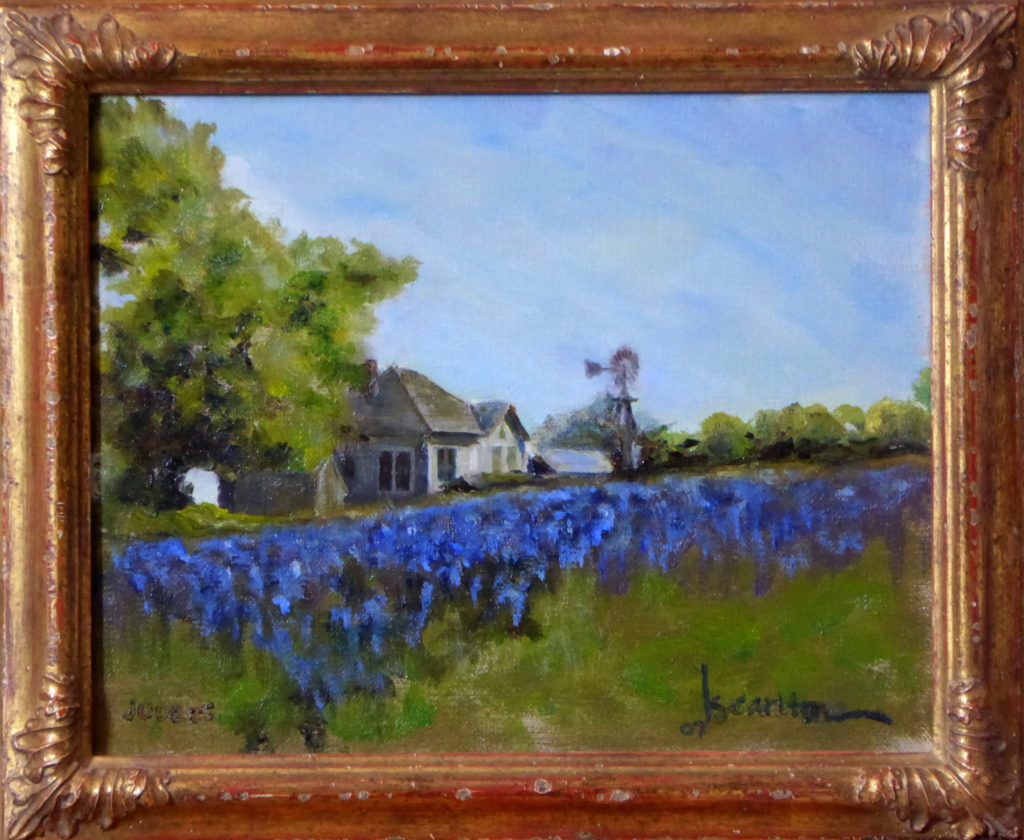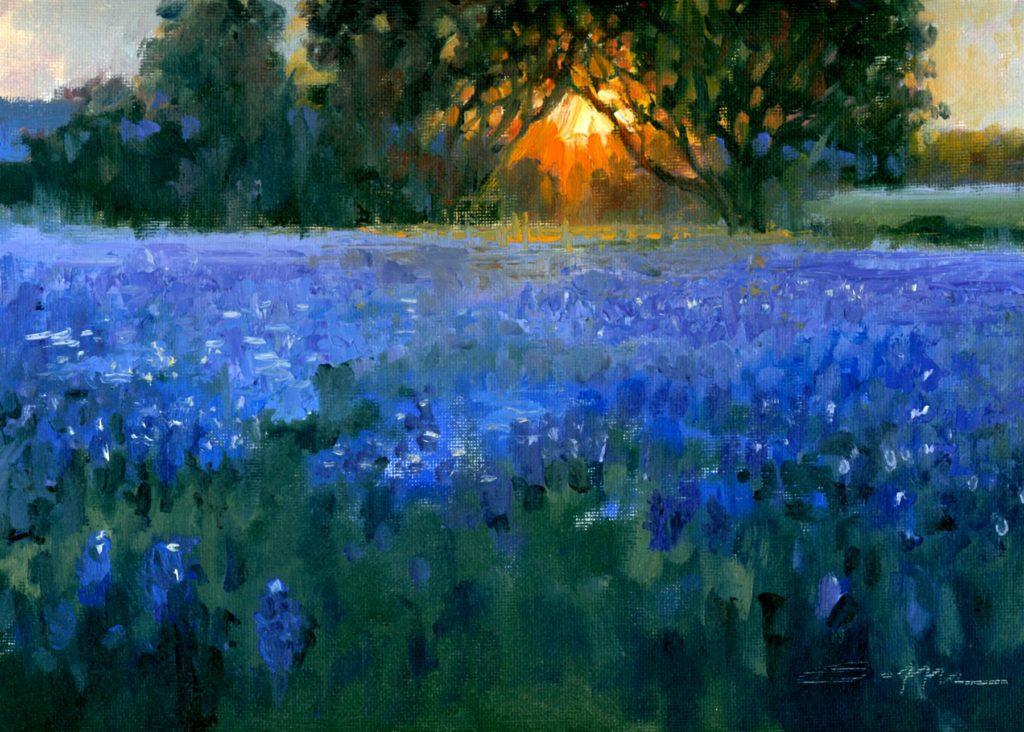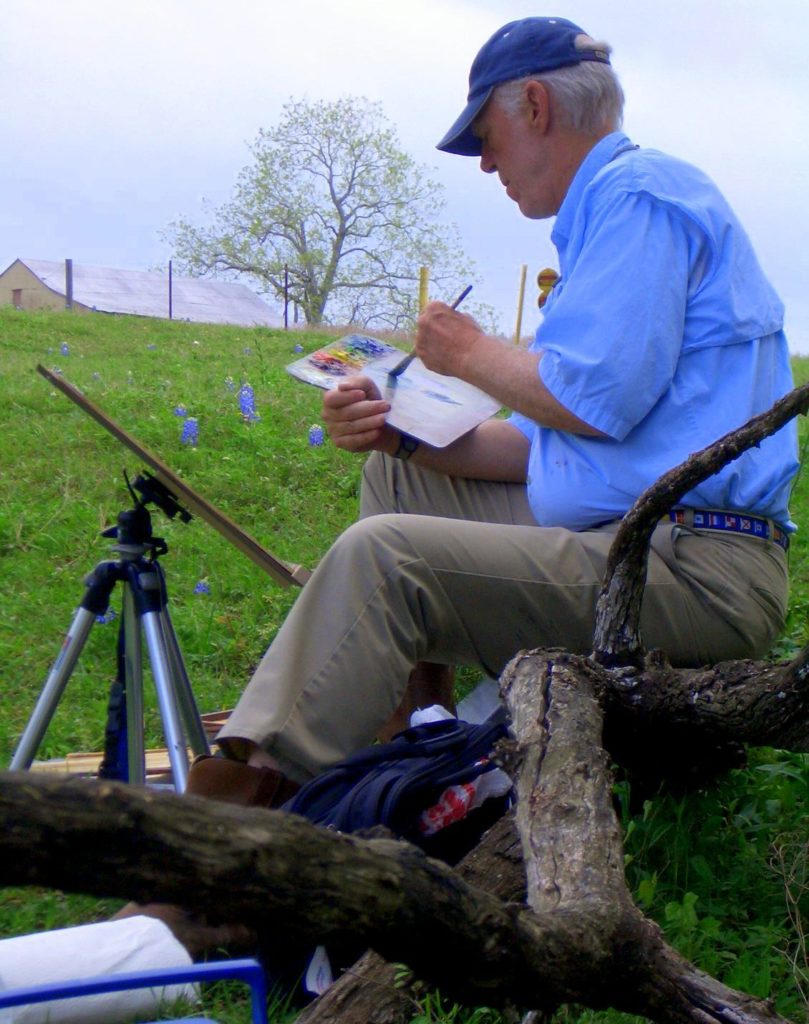Members of the Outdoor Painters Society will gather in Ennis, Texas, in May to paint bluebonnets. A member of OPS has some advice on this.
“A bluebonnet painting, if done well, presents a unique set of problems and is not for sissies,” says OPS member Kim Carlton. “One problem is to decide what color the bluebonnets are. There is no ‘blue’ that would describe them, in spite of their name. On an outing years ago, the closest any of us came to ‘bluebonnet blue’ from a tube was when one guy just added some white to ultramarine blue. The more true color was approximated when he added a spot of alizarin crimson, technically making it a purple. Do not make the mistake of telling a Texan that the bluebonnets are purple. I won’t go into why, but seriously, take my word, you don’t want to tangle with a Texan over that.”

Carlton continues, “Another decision is whether to paint each and every bluebonnet as they appear, or paint the essence of them en masse. This problem may be automatically solved by the style of the artist, or by the vantage — vista or intimate landscape. An intimate landscape may beg for some detail, while a vista painted from a distance would require more brevity in the flowers’ description.”

Some artists, and even some gallery owners, have mixed feelings about bluebonnet paintings. As OPS officer Randy Saffle points out, “It has become a Texas cliché, but nobody will deny collectors in Texas search out bluebonnet paintings. Bluebonnets are as iconic of Texas as images of cowboys or cattle.” Their very popularity can grate on the nerves of painters.


“A problem with bluebonnet paintings in general is that they tend to be sweet and sentimental-looking,” Carlton says. “There have been painters over the years who have contributed to this sticky reputation. There’s a wonderful gallery here in Texas that has a ‘no bluebonnet paintings’ rule because of the sappy rap they’ve gotten. That problem can be solved by more and better painters getting out there and creating strong and beautiful bluebonnet paintings. That’s us.”

In perfect plein air painting fashion, Carlton sees the obvious upside to this issue. “The best thing about painting bluebonnets en plein air is, you get to go outdoors to paint bluebonnets! It’s what you always wished you could be doing instead of being stuck inside doing schoolwork or paperwork. If it’s bluebonnets, then you have to be somewhere that they grow, and I’d suggest Texas. It has to be springtime, that’s when they bloom. It has to be sunny, and you can go alone or with a bunch of friends — there’s really no downside. You will run into problems out there trying to paint the bluebonnet, but bluebonnet painting is a beautiful and wonderful problem to try to solve.”




